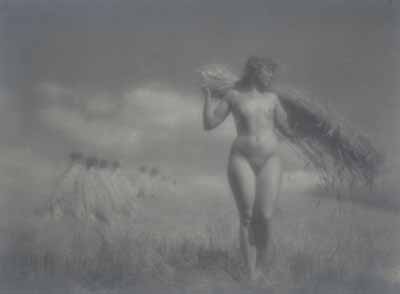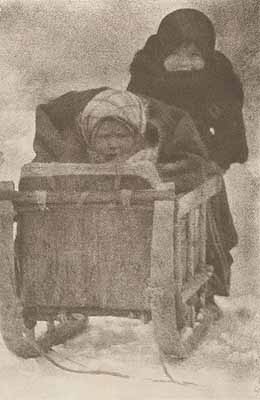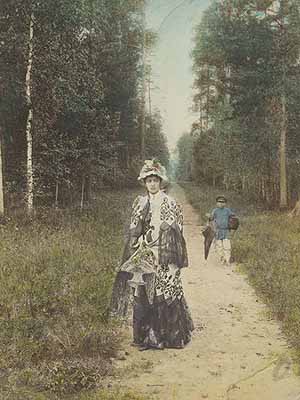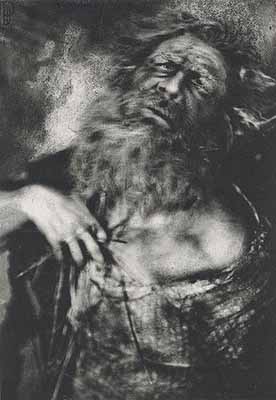
Quiet Resistance: Russian Pictorial Photography 1900-1930s
Nikolay Andreyev » Emil Bendel » Yuri Eremin » Alexander Grinberg » Piotr Klepikov » Sergej Lobovikov » Alexey Mazurin » Savrassov » Miron Sherling » Leonid Shokin » Nikolai Svishov-Paola » Anatoly Trapani » Vasiliy Ulitin »
Exhibition: 29 Nov 2005 – 26 Feb 2006
The exhibition Quiet Resistance: Russian Pictorial Photography, 1900-1930s at the Gilbert Collection this winter presents some 100 photographs by artists whose works have rarely been exhibited in the UK. Curated and organised by Olga Sviblova, Director of the Museum Moscow House of Photography, this show provides an extraordinary opportunity for visitors to explore an aspect of Russian photography that has been overlooked until now. The Russian photographic avant-garde of the 1920s and 1930s, represented by Alexander Rodchenko, El Lissitzky, Boris Ignatovich and others, in spite of persecution and repressive measures of the totalitarian regime, became a classic part of Russian and world art. Moreover, it became a symbol of the powerful energy and innovative spirit of Soviet Russia in the first years after the October revolution of 1917. However, few people realise that at the very same period there was another, pictorial trend in Russian photography, which strove to approximate photography to painting, using mainly 'soft' lenses and special, often very sophisticated, printing techniques. Pictorial photography challenged documentary shots and, just like painting, sought to convey the emotional side of things, and to express the individual senses and meanings implied by the artist in his work. The masters of Russian pictorial photography, Alexander Grinberg, Yury Yeremin, Nikolai Andreev, Nikolai Svishchov-Paola and others, were an established part of the world art scene. They frequently won gold and silver medals at major international photo shows and salons in Europe, United States and Japan. Pictorialism in world photography, born in the late nineteenth century, had largely exhausted its aesthetic potential by the mid-1920s. In Soviet Russia, however, it was going from strength to strength. Miron Sherling, Fedor Chaliapin as the Miller in the Opera "Rusalka" by Dargomyzhsky, 1913 In 1928, at the exhibition 10 Years of Soviet Photography, the so-called 'old school' clearly dominated, if we consider the number of participants and their works by comparison with the modernists and adherents of the new Soviet reportage. In the same year, despite the fact that rigid ideological pressure on artists, expected to embrace right away the new aesthetics of Socialist Realism, was yet to come (in the early and mid-1930s), photographers of the pictorial trend were branded as bearers of bourgeois ideology, 'idealist individuals' and upholders of the old pre-Revolution ways. This was actually true insofar as pictorial photo artists went on to live and work in the new Soviet state, largely adhering to the hallowed human values and their own existential and aesthetic experience. Not all of them rushed to adopt Soviet slogans, which enforced the priority of the collective over the individual, with exalted rapture for revolutionary achievements. Their subject matter was mostly confined to traditional pictorial themes, i.e. landscapes, nudes, shots of old mansion houses, and unpretentious genre scenes. A brilliant sense of composition and virtuoso technique of execution endeared the pictorialists to organisers of international photo shows and salons. Foreign press devoted much attention to them and, curiously, just like Soviet critics, regarded them as aesthetic opposition to the militant Soviet ideology. For instance, after the Paris salon of 1925 a British photography magazine observed that '…whatever their political convictions, the Russians in the shots they sent firmly stand within traditional bounds'. Pictorialist photographers were vehemently attacked by Soviet critics, who vainly pointed out the right way to Socialist Realism. As one author put it in 1936, '…contemporary Soviet reality is such that laughter, joy and smiles are typical features of our new way of life', so that 'our life has become really wonderful'. Photographic debates of the late 1920s were mostly about aesthetics, focusing on the advantages of certain compositions and opportunities offered by different optical devices or printing techniques. However, by the early 1930s aesthetics yielded to ideology. From the late 1920s onwards all spheres of Soviet life, including the art of photography, were haunted by the search for enemies of revolutionary changes. The 'enemy' image became a foundation for ideological propaganda. On the one hand it paralysed everyone's personality with fear, on the other, it aimed to consolidate and inspire the masses in their heroic efforts for the sake of radiant future. Thus pictorialists ended up as 'enemies' in photography. They were accused of predilection for the old non-revolutionary world, where bourgeois values reigned supreme and ignored class struggles. Passion for landscapes, old palaces or naked women was condemned as 'Turgenev's stuff' (after the nineteenth-century writer) and 'political short-sightedness'. Nevertheless, the more violent the attacks became, the stronger the 'quiet' resistance. Working with 'non-Soviet' subjects, pictorialists defended their aesthetics, which took shape before revolutionary upheavals, and their outlook, which differed from the new Bolshevik mythology. Yury Yeremin wrote, '…I am going on my way bravely and calmly. As to reconstruction, for those who regard it lightly it is very easy to change their ways'. In 1935 moral persecution of artists led to physical repressions. Under a ludicrous pretext of 'dissemination of pornography' Alexander Grinberg was sent to one of Stalin's labour camps. The charges followed the exhibition Masters of Soviet Photography, held in 1935, where that master of international renown showed his studies of the naked form. Nudes were purged from Soviet photography. Vassily Ulitin was exiled from the capital, and virtually all pictorialists lost their right to practise their profession. Since the late 1930s they were also deprived of the chance to exhibit their works abroad. In spite of the crackdown, masters of Russian pictorial photography persevered in their creative work. For example, Yury Yeremin locked himself up in the bathroom of a big communal flat and secretly printed his favourite photos in small format. Any of them would have been sufficient to condemn him. In 1928 in Novy LEF magazine Alexander Rodchenko spoke out against pictorialists: 'It is not so much painting we are struggling with (it is dying anyway), but rather with photography “a la painting”… We have to experiment'. In the mid-1930s, when attacks on pictorialism were at their worst, he skilfully used that very style for his famous Circus series as well as scenes from classical operas and ballets. Perhaps, this was some kind of resistance too... Getting tired of non-stop revolutionary changes resulting in a reality so distant from his own original ideals, he remarked in his diary on 12 February 1943: 'Art is serving the people, but the people are led different ways. I would like to lead the people towards art, not to lead them somewhere through art. Was I born too early or too late? Art must be separated from politics…'. In the late 1930s Soviet photography, like Soviet art as a whole, witnessed the triumph of Socialist realism. Isolated from the outer world by the iron curtain, it gradually degenerated from 'the most important of the arts' to an accessory of the ideological machine. Most of the original photo prints of that period, made by artists who did not conform to new canons, were neglected, never appeared in public for over half a century and consequently perished. The exhibition Quiet Resistance: Russian Pictorial Photography, 1900–1930s presents some vintage prints, but does not aspire to be a complete survey of this trend. It is rather a brief summary, an effort to outline the phenomenon. For the first time it brings together photos by masters who worked at the same period, and thus interacted and influenced each other. From the mid-1980s onwards, Russian modernism, first and foremost the work of Alexander Rodchenko, has increasingly been appreciated abroad. Its 'rediscovery' in Russia took place as late as the mid-1990s. The phenomenon of Russian pictorial photography has only recently begun to attract the attention of experts and historians. This reappraisal is still far from complete but it already gives us a fuller understanding of the development of early twentieth-century Russian culture and history. The Moscow House of Photography and the Gilbert Collection would like to thank Roman Abramovich for his generous sponsorship of the exhibition.


